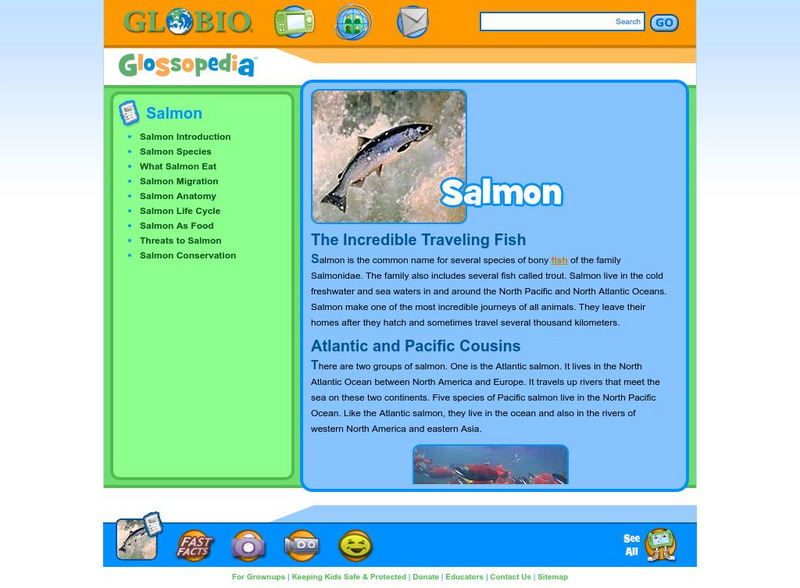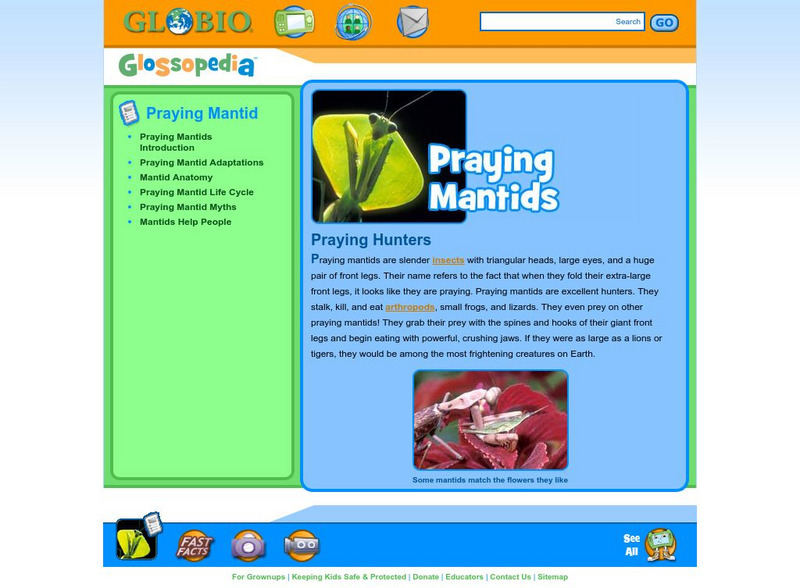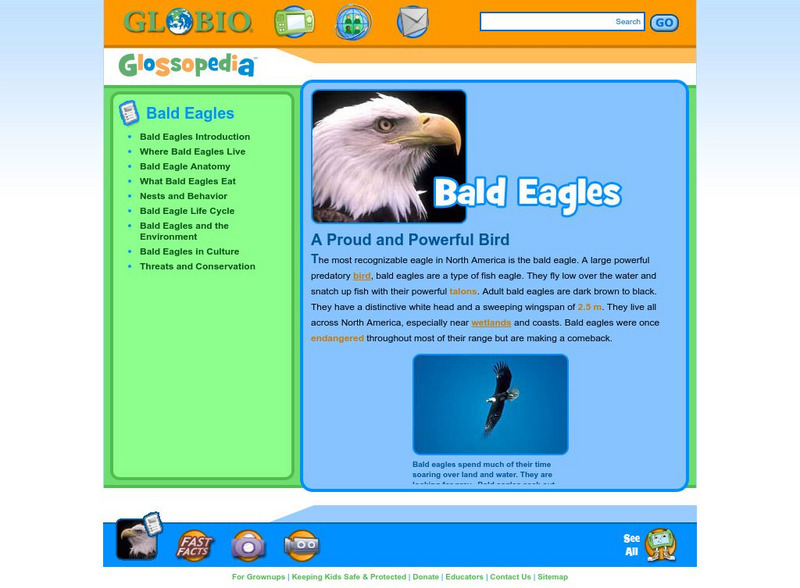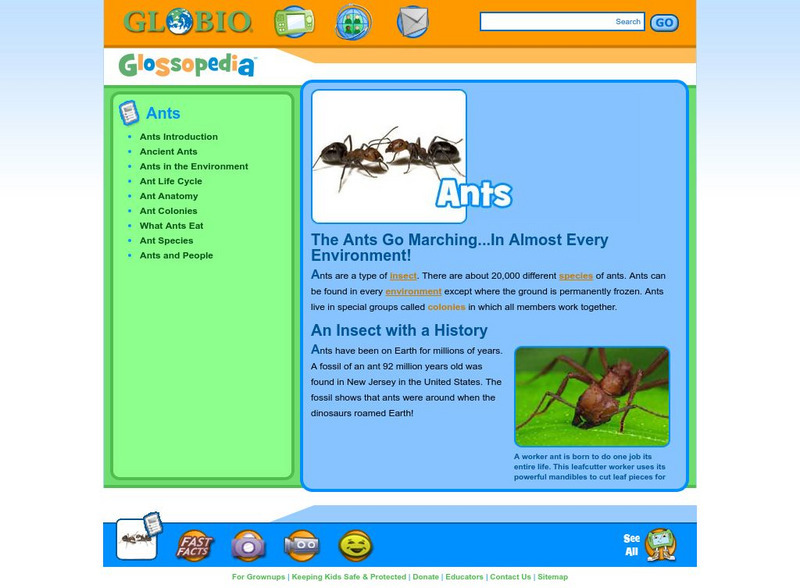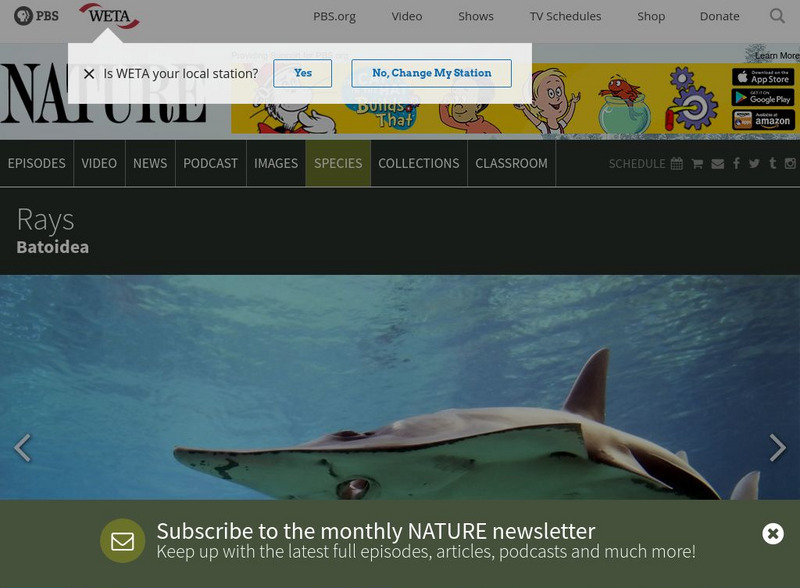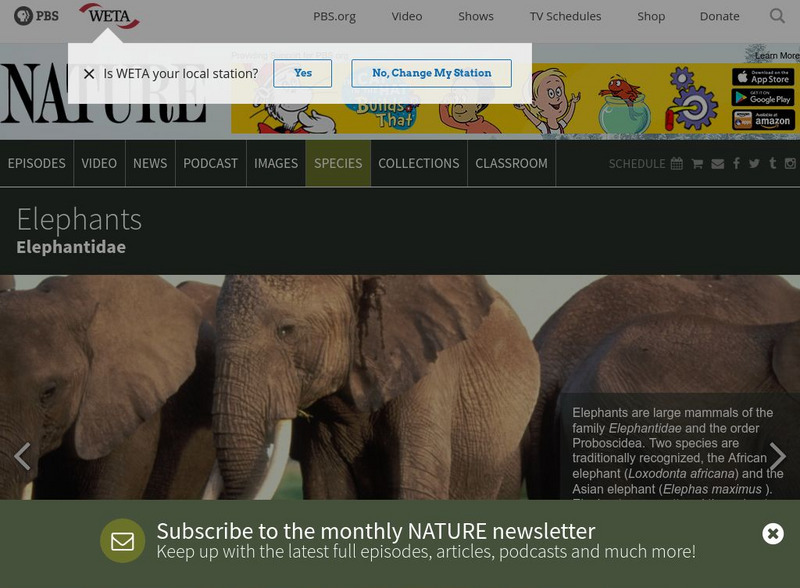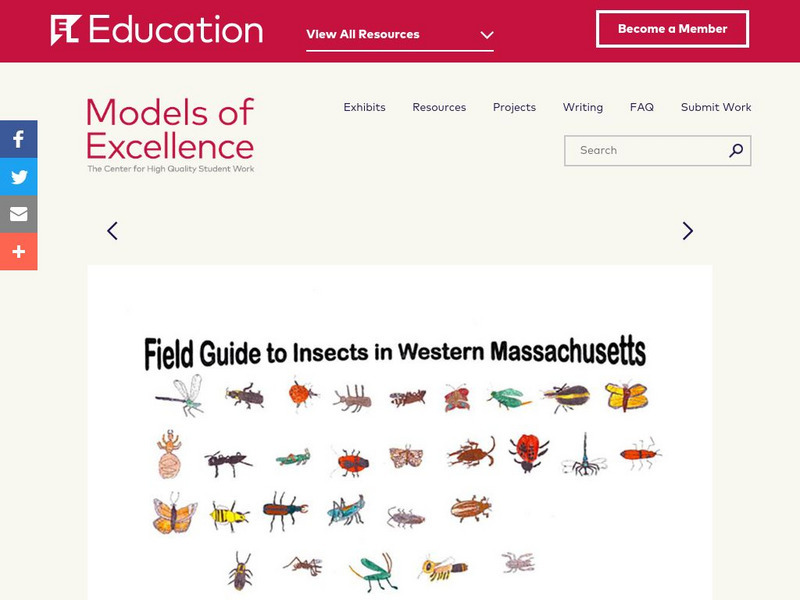Globio
Glossopedia: Rockhopper Penguins
Rockhopper penguins live in steep, rocky places. The only way they can get around on land is to hop from rock to rock. Rockhoppers grow about 46 cm tall - almost as high as an adult's knee. They are the smallest of the crested penguins....
Encyclopedia of Earth
Encyclopedia of Earth: Botany: Mangrove Ecology
Extensive article on mangroves. Covers classification, physical characteristics, life cycle, habitat, economic value, and natural and human threats to their survival.
Globio
Glossopedia: Salmon
This article introduces various species of salmon, breaking them into two groups - Pacific and Atlantic Salmon. Salmon habitat and life cycle are described. Concepts of spawning and food chain are explored. The issues of human activities...
Globio
Glossopedia: Praying Mantid
Praying Mantids are excellent hunting insects found throughout the world. Various species of mantids, their life cycle, hunting habits, and habitat are described.
Globio
Glossopedia: Lions
Lions are big cats that are related to tigers, leopards, and jaguars. The number of lions is decreasing and lions are losing habitat. A long time ago, someone crowned lions as "the kings of the jungle." But lions don't live in jungles....
Globio
Glossopedia: Bald Eagles
The bald eagle is a predatory bird that lives in North America. This article discusses bald eagle hunting habits, habitat, life cycle, diet, anatomy and mating habits. The concept of the food chain is introduced and is used to explain...
Globio
Glossopedia: Ants
Ants are small, but important insects. Ant anatomy, reproduction, life cycle and community are discussed. Impact on the environment and humans is also described.
BiologyWise
Biology Wise: Gametophyte and Sporophyte
This resource explains how the alternation of generations occurs in a plant's life cycle where sporophytes and gametophytes each play a role in plant reproduction.
Other
Earth Science: Earth's Surface and Heat [Pdf]
This textbook chapter looks at the role of temperature in sustaining life on Earth and on weather and climate. It discusses the Earth's movements and the seasons, the circulation of the oceans, wind and weather, and the water cycle....
PBS
Pbs Learning Media: Migration of the Monarch
This video segment from NOVA: "The Mystery of Animal Pathfinders" explores the migratorial exploits of monarch butterflies. [4:39]
Other
Ursus International Conservation Institute: Black Bears
Read an in-depth description of black bears. Includes numerous images.
University of Texas at Austin
University of Texas: Thunderstorms
You can find out the conditions for a thunderstorm, the life cycle, types, and wall clouds.
Other
Amphibian and Reptile Conservation: Natterjack Toad
Description of the Natterjack Toad, including how to identify it, and its life cycle. It also provides a video [6:06] of an edition of the Living World with Lionel Kellaway, focussing on the natterjack chorus.
Read Works
Read Works: Vocabulary in Context 2nd Grade Unit: Context Clues
[Free Registration/Login Required] This is a lesson in which students learn to use context clues in surrounding sentences to determine the meanings of unfamiliar words. The lesson utilizes the book The Life Cycle of an Emperor Penguin by...
Woodland Park Zoo
Woodland Park Zoo: Barn Owl
Zoo site highlights the Barn Owl. Provides a brief description as well as additional information such as classification, range, life cycle and more.
Woodland Park Zoo
Woodland Park Zoo: Rattlesnake
Resource features the Rattlesnake. Provides a brief description as well as additional information on its classification, range, life cycle and more.
PBS
Pbs Kids: Dragonfly Tv: The Show: Trees
How much do you think you know about trees? PBS site offers a video and description of the life cycle of trees and their leaves.
Globio
Glossopedia: Wolves
Wolves are closely related to coyotes, jackals, foxes, and the dogs you see romping in your neighborhood park. Wolves are predators who live and hunt in packs. They are well known for their eerie howling and their intelligence. This...
PBS
Pbs Nature: Ray
The word "manta" means blanket in Spanish--and the Manta ray gets its name from its blanketlike appearance in the water. Learn all about their life cycle and habitat in text and pictures.
Other
Child Development Institute: Adolescence: The Last Step Before Becoming an Adult
Begin to understand the teen age group looking at its place on the growth sequence. Learn that adoelscence, being the last step before becoming an adult brings many changes and challenges.
PBS
Pbs Nature: Elephants
Did you know that the elephant is the largest animal in the world? Discover more about where they live, what they eat and how they socialize when you visit this site.
National Institutes of Health
National Library of Medicine: Entomology in Action
Two lesson plans are found in this site. Lesson Plan 1 is geared to grades 6-9. In this plan, student's will be able to list the different stages of the blow fly's life cycle and understand how the life cycle and ADH (accumulated degree...
EL Education
El Education: Field Guide to the Aquatic Gardens at Forest Park
3rd grade students in Springfield, Massachusetts created this field guide as part of a learning expedition on ecosystems and pond life. Students did fieldwork in the city park and worked with local experts, closely examining the ponds....
EL Education
El Education: Field Guide to Insects in Western Massachusetts
This field guide was created by 2nd graders in Springfield, Massachusetts. It was part of a two-month Learning Expedition that included field observation and collection, classroom experimentation and research, reading from books and...




